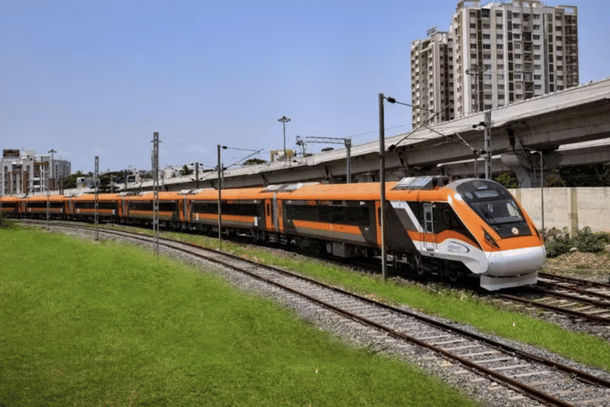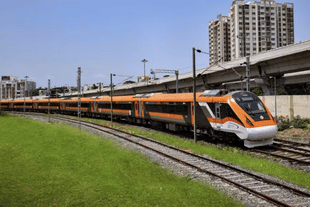News Brief
India's First Railway Test Track Worth Rs 820 Crore Nears Completion In Rajasthan, To Be Operational By 2025
V Bhagya Subhashini
Nov 11, 2024, 12:43 PM | Updated 12:43 PM IST
Save & read from anywhere!
Bookmark stories for easy access on any device or the Swarajya app.


Construction is underway on India’s first dedicated railway test track in Rajasthan, an advanced facility designed to enhance testing capabilities for high-speed and modern rail rolling stock.
Expected to be fully operational by December 2025, this state-of-the-art 60 km track will provide Indian Railways a controlled environment to conduct rigorous tests on various types of rail vehicles, from bullet and high-speed trains to metro and semi-high-speed trains.
Situated in the Jodhpur Division, between Gudha and Thathana Mithdi in Deedwana district, the track passes through the iconic Sambhar Lake, about 80 km from Jaipur.
Unlike a traditional straight track, this facility features multiple curves to test train stability at various speeds, simulating realistic track conditions. Some of the curves are designed for high-speed tests, while others accommodate lower speeds, allowing Indian Railways to analyze how trains maintain performance on challenging paths.
Once the first phase is completed, bullet trains will be able to reach speeds of up to 230 km/h on this track.
The project, with a budget of Rs 820 crore, will mark a significant milestone in modernising India’s railway infrastructure. Aimed at improving safety standards, the test track will help railway engineers and the Research Design Standards Organization (RDSO) ensure rolling stock meets stringent operational and safety criteria before being deployed on main lines.
RDSO will use this dedicated track to examine various aspects, including speed, stability, accident resistance, and the impact of vibrations.
Constructed in two phases—Phase 1 was approved in December 2018 and Phase 2 in November 2021—the test track includes complex infrastructure, such as seven major bridges, 129 minor bridges, and four stations (Gudha, Jabdinagar, Nawan, and Mithadi).
To date, 27 km of the track has been completed. The track design incorporates unique testing loops, including a high-speed loop of 13 km, a 3 km quick testing loop at Nawa station, and a 20 km curve testing loop in Meethadi.
As per Economic Times report, in addition to rolling stock trials, this track includes advanced testing facilities for other railway components such as track material, signalling equipment, TRD (traction distribution) gear, and bridge structures.
The bridges, built with reinforced concrete and stainless steel, are designed to resist vibration, corrosion, and the demanding conditions around Sambhar Lake’s alkaline environment. These structures will allow engineers to assess high-speed train performance and monitor effects on stability and track wear.
Previously, Indian Railways faced scheduling challenges when conducting trials, as regular rail lines are often crowded with traffic. This new test track will alleviate that pressure, providing a dedicated space for trials without disrupting regular train services.
With this facility, India aims to elevate its rail infrastructure, setting new benchmarks for speed and safety while also offering testing capabilities to neighbouring countries.
V Bhagya Subhashini is a staff writer at Swarajya. She tracks infrastructure developments.




